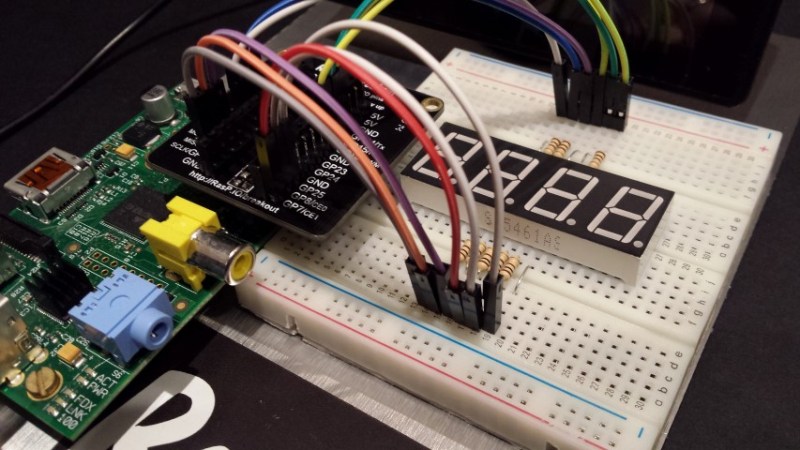The whims of the tides can make walking near the ocean a less than pleasant experience. A beautiful seascape one day may appear as a dismal, mucky, tidal flat the next. Frustrated over these weary walks, [Average Man] created a tidy tide tracker to predict propitious promenade periods.
A Raspberry Pi A+ pulls tide timing information off the web by scraping a web page using Python code. The time for the high tide, when the estuary will be full of water, is shown on a 4-digit 7-seg display. It’s all sandwiched between two smoked black panels to provide a neat case while still letting the LEDs show through.
The code comes from two projects [Average] recalled from a kickstarter timing project and a 7-seg display project. As he points out:
It’s great to learn programming from others, but it’s even better if you learn them well enough to remember, re-use and combine that code later on as well.
The display chips are mounted on a product of his own, the no longer available ProtoPal board. This is a Pi A+ size board with 288 prototyping holes and the standard connector for mounting on the Pi GPIO header. It keeps the project neat and clean.
















looks like a bomb :)
Thanks for the feature:D FYI the ProtoPal is still available at a couple of retailers, Pimoroni and Rapid Electronics are my local stockists. I think that’s it though, I don’t think there is sufficient demand to make any more.
There is a certain ‘Red wire? Green wire?’ vibe to it :-) Nice project though! Respect.
After reading the summary, I was hoping the module would perform its own calculations, instead of scraping a website.
I also thought it would be nice to calculate the tides, but I know its quite hard to do. One of the machines they used to use in the UK is pictured here:-
http://www.ntslf.org/about-tides/doodson-machine
and info about predicting tides is here:-
http://www.ntslf.org/about-tides/tides-faq
Replicating the machine with the pulleys should be fairly easy in software. The tricky part is finding all the parameters for a given location.
See x-tides read me, it has harmonic offset values for most locations including UK (for non-commercial use due to met office’s dubious claims of ownership…)
I wonder, does this require more computing power than typical office desktop PC just to get some info from the Internet and display it? Next time shoot some ducks with heat-seeking missiles…
It’s using a Raspberry Pi A+. Surely that doesn’t have more computing power than a typical office desktop PC?
But even that misses the point. This is about fun and learning. Bravo to Average Man.
Haha yes you could just go on your smartphone and check the same website I pull the data from, but that isn’t really the point of the Raspberry Pi is it.
To make this I had to learn how to use Inkscape, how to code it in Python, up my soldering game and learn all about segment displays (common cathode).
^^ That is the point of this project. Not to make something new, it’s a fun way of putting all my learnings into a project and being happy with the output.
Besides, I’d much rather have a 4″ display box on my TV unit than a full desktop PC!!
It depends on the office. In my country Social Security still uses floppies for moving data. And because RPis here cost 4 times the american price, I find it a bit wasteful to use such overpowered device for such menial task. Besides doing this with ESP2866 and 8-bit micro would be more educational. And calculating tides with 8-bit micro would be even better…